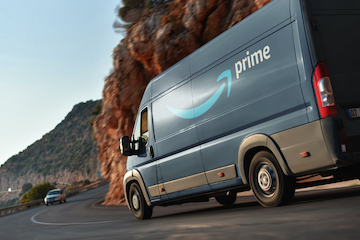I have been selling on Amazon for many years. I have learned a few things about how to use the marketplace to expand and enhance my ecommerce efforts. In this post, I’ll review why selling my own brand on Amazon is the best option for me.
Selling other brands
Before you can sell anything on Amazon, develop a strategy that syncs with the type of ecommerce merchant you are.
In my experience, the strategy of selling brands that are available in multiple channels and sold by others on Amazon is very difficult, for the following reasons.
- Selling national brands. I have tried this for a few categories like skin care, shaving, groceries, and music accessories. I am not a fan of this approach. It does not work for me and my skill set because I am a marketer first and foremost. I want to spend my time marketing, not buying. To be successful in this approach, you have to have some sort of supply chain advantage.
If you don’t have a unique supplier relationship, you have to excel at online arbitrage — i.e., buying products very cheap that will sell well on the marketplace. Otherwise you might be taking a huge, unrewarding risk.
- The fight for the Buy Box. When you are not the only seller of a brand on the marketplace, you are fighting for the Buy Box every day. This takes much effort — more than just marketing. The lowest price is a part of the equation, but your seller rating, error rate, inventory level, and performance also play a part.
And it takes more than extra effort. You could have the best performance rating and be selling the same product for only $1 more, and you will still have a heck of a time winning the Buy Box. Is it worth the hustle? Not for me.
- The Brand Registry. One of the keys to selling successfully on Amazon is making sure that your product bullet points, description, and images are optimized to the Amazon search ecosystem. When you don’t own the brand and are not the registered owner in the Amazon Brand Registry, you cannot change to those items. Only the registered brand owner can make changes.
What does that mean? You can’t differentiate your business from anyone else for the same products. And this severely limits your potential to max out profits.
Control the brand
On the other hand, if you sell your own branded product, you can handle Amazon differently, playing to your unique strengths and circumstances.
A strategy I prefer is to look at some of the biggest selling items on the marketplace. There are several third-party applications that can provide this data. Two of the most prominent are Unicorn Smasher and Scope. Both are estimators based upon ranking. They are good for products on the marketplace for at least a year. For new products or for products in a growth mode, the information lags by about six months.
One you identify top sellers, figure out the ones wherein you have a competency. Recreate the items under your own brand and develop a business that way.
A few years ago, for example, I had noticed that hair regrowth products were selling strongly on Amazon. Rogaine was the leader. In reality, Minoxidil is the active ingredient in Rogaine and the percentage of Minoxidil is what the user cares about in the end.
The Minoxidil user prefers to purchase this product online because of the anonymity. Realizing the potential of this online market segment, I spoke to a manufacturer and I learned that there are only three manufacturers who can produce Minoxidil and that manufacturer was one of them. So, I created my own brand to market on the marketplace.
The bottom line is that you have to determine your strategy. If you have a core competency in supply chain and procurement, where you can buy brands for less money than most, then you can do well. The marketplace will provide tremendous volume and great profits if you manage it correctly.
If you own or control a brand and want to develop omnichannel sales, Amazon is a terrific tool to build awareness and increase sales. But, do not to put all of your eggs in the Amazon basket. Make sure you are diversifying your channels across the ecommerce spectrum.




